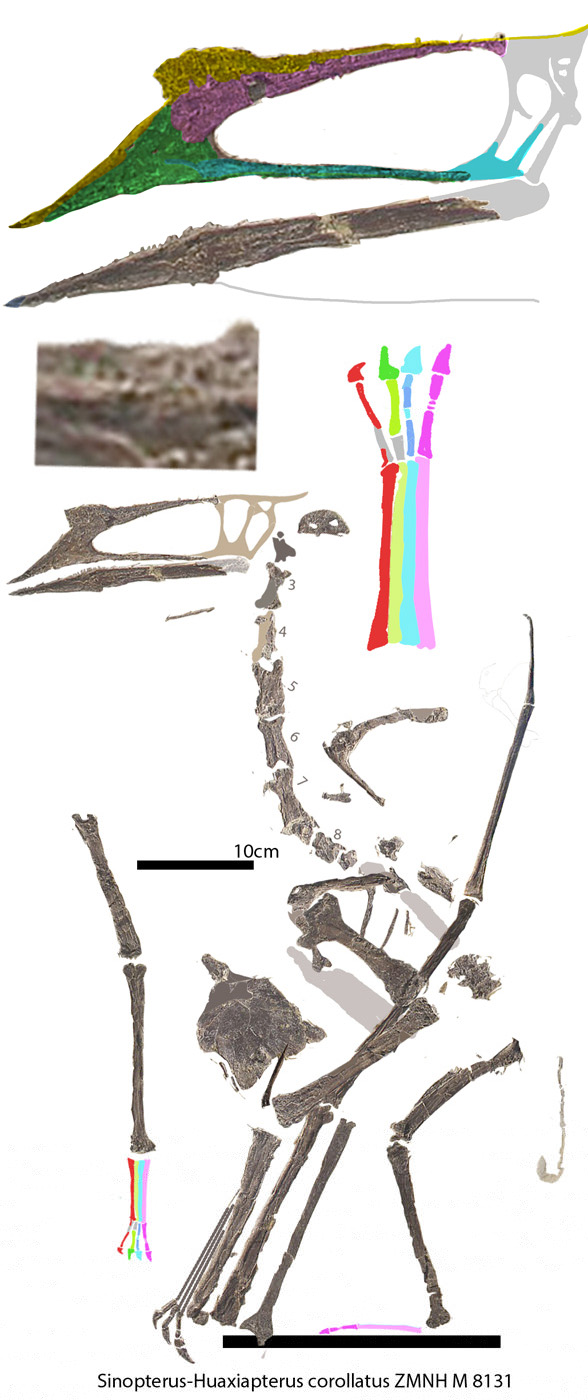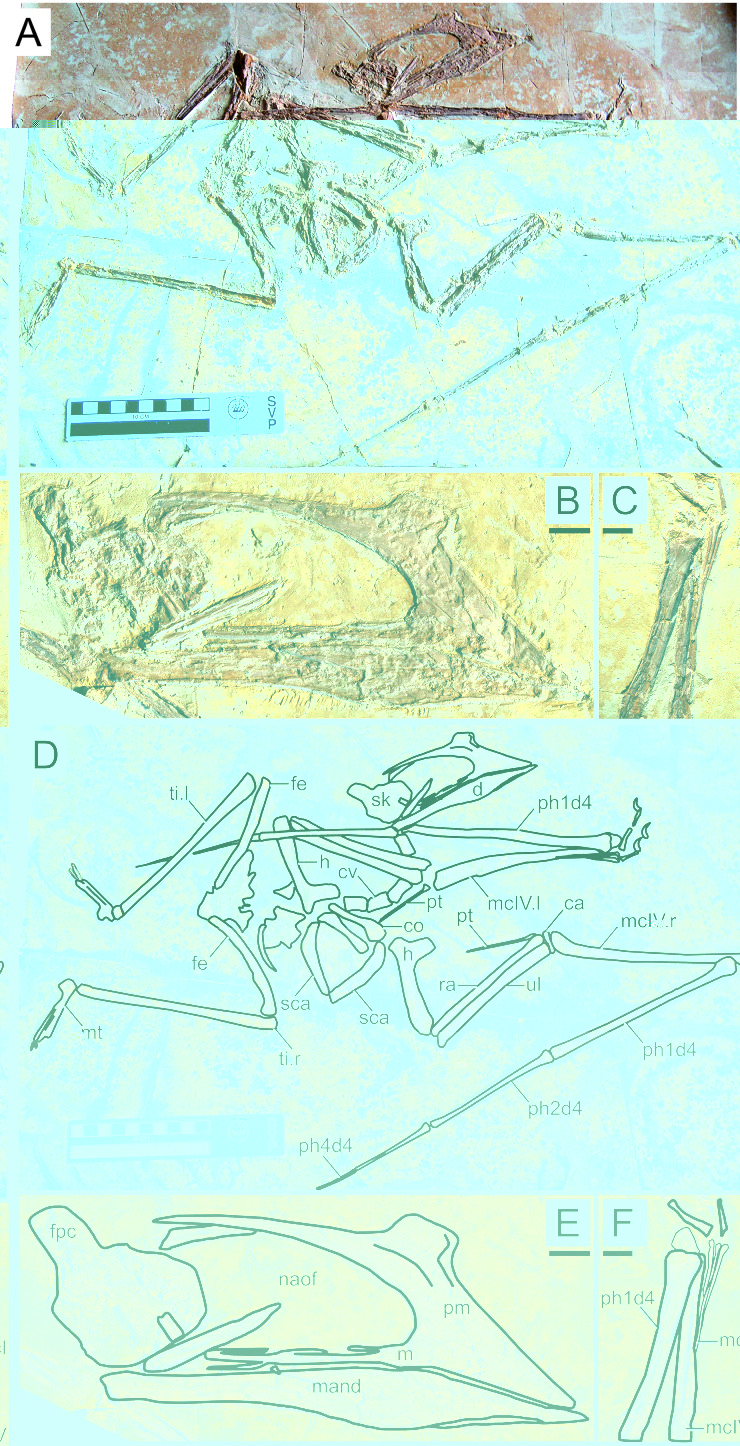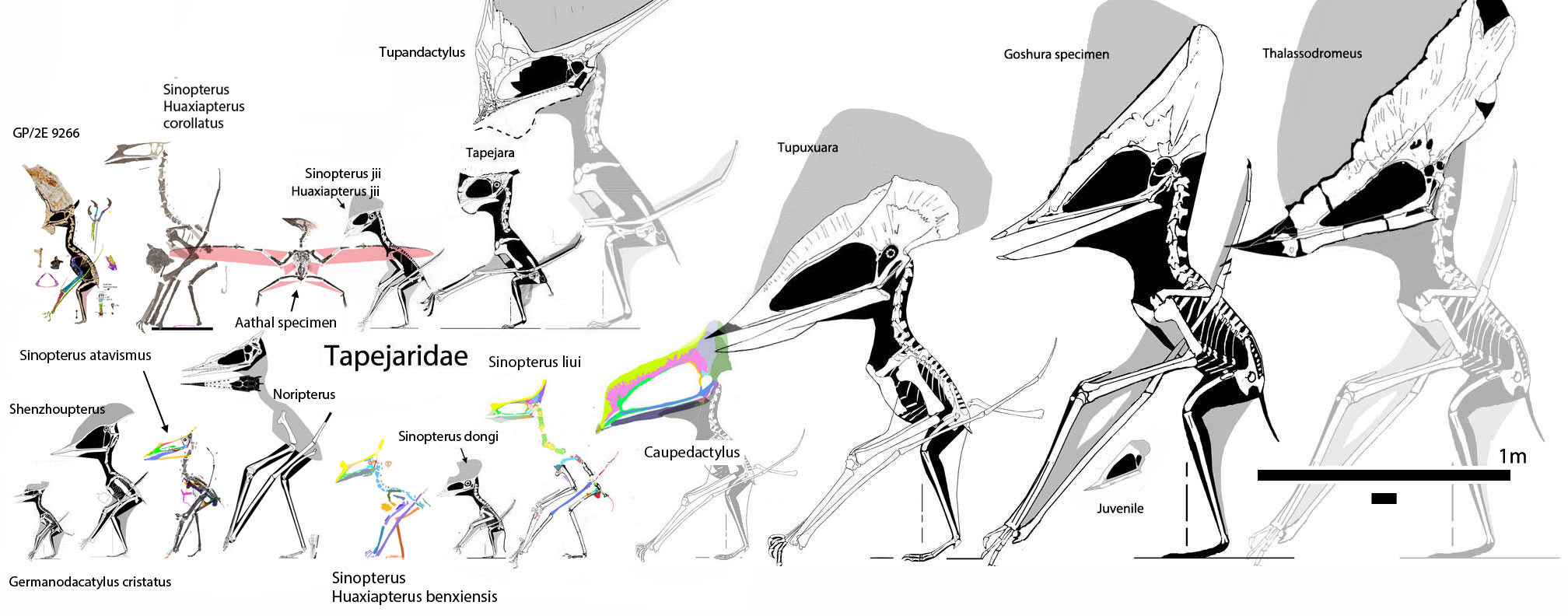ZMNH M813 (holotype of Huaxiapterus corollatus)
Compare the trapezoid premaximilliary "crest" -'hatchet' angle ,placement with green mama on previous midpage ,brooding eggs in a nest ..with her wing above..protectively

 (A) Skeleton overview; (B) skull (right lateral view); (C) left metacarpus. (D ..to...F) Respective schematic drawings. Abbreviations: ca, carpus; co, coracoid; cv, cervical vertebra; d, dentary; d1..to...d4, digits 1...to...4; fe, femur; fpc, frontoparietal crest; h, humerus; l, left; m, maxilla; mand, mandible; mc, metacarpal; mt, metatarsal; n, nasal; naof, nasoantorbital fenestra; pm, premaxilla; ph, phalanx; pt, pteroid; ti, tibia; ul, ulna; r, right; rad, radius; sca, scapula; sk, skull. Scale bars: A, D, 100 mm; E, F, 10 mm.
(A) Skeleton overview; (B) skull (right lateral view); (C) left metacarpus. (D ..to...F) Respective schematic drawings. Abbreviations: ca, carpus; co, coracoid; cv, cervical vertebra; d, dentary; d1..to...d4, digits 1...to...4; fe, femur; fpc, frontoparietal crest; h, humerus; l, left; m, maxilla; mand, mandible; mc, metacarpal; mt, metatarsal; n, nasal; naof, nasoantorbital fenestra; pm, premaxilla; ph, phalanx; pt, pteroid; ti, tibia; ul, ulna; r, right; rad, radius; sca, scapula; sk, skull. Scale bars: A, D, 100 mm; E, F, 10 mm.Morphological survey This specimen is almost complete, although some skeletal regions are badly damaged and anatomical details are obliterated, particularly the posterior region of the skull, post-cervical vertebrae, and the pedes (Fig. 4). The skull exhibits a trapezoidal premaxillary crest and a shallow dentary crest. The rostrum is relatively robust, akin to that of the holotype of Huaxiapterus jii and unlike the holotypes of S. dongi or S. gui. The rostrum is ventrally deflected by 21degrees (contra 14degrees in the holotypes of S. dongi and H. jii). The nasoantorbital fenestra is relatively short, with an estimated length/height ratio of about 2.2 (based on its length as inferred from the location of the quadratomandibular joint, as indicated by the preserved mandible, as it roughly correlated to the posterior margin of the nasoantorbital fenestra in sinopterines and tapejarids overall; e.g., Kellner & Campos, 2007; Kellner, 2013; Lu et al., 2016). A clear occlusal gap is present between the dentary and the rostrum (as originally indicated, see Lu et al., 2006a), unlike what has been represented in some reconstructions (e.g., Witton, 2013). The cervical series is partially obscured by the radius and ulna, which lay over cervicals IV..to...V, hindering assessment of their relative lengths. Metacarpals I..to..III are reduced, and it can be seen that metacarpals I and II do not contact the carpus, reaching only about a third of the length of metacarpal IV. Wing proportions deviate from previously reported specimens in that the fourth wing phalanx is relatively shorter, accounting for only ~20% of the first phalanx (contra ~30% in the holotypes of S. dongi and S. jii).

This is a part of Cathedral To Clown Project
___________________________________________________________________________________________________________________________________________